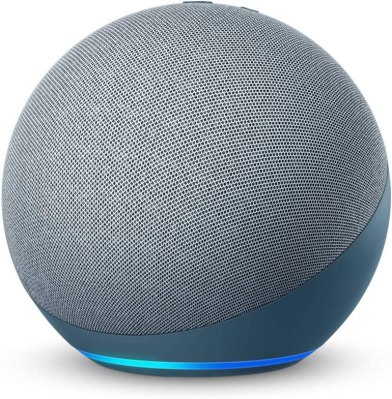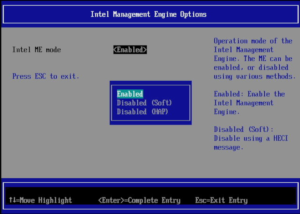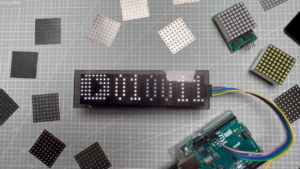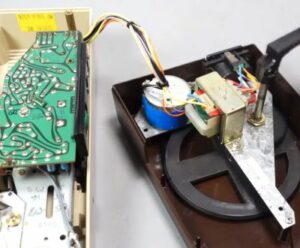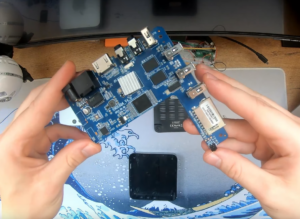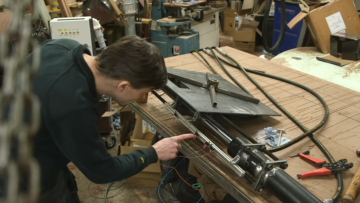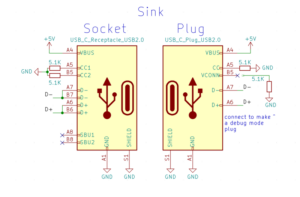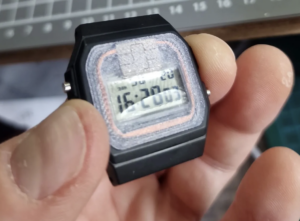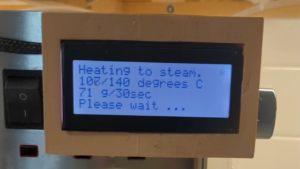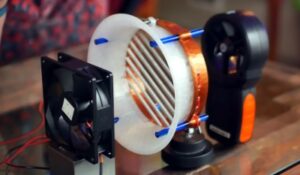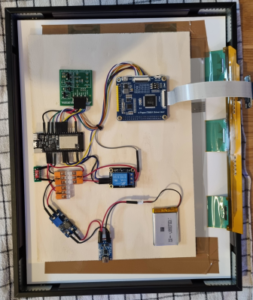As the Internet of Things became a mainstream reality, it raised an interesting point about connectivity. We quickly learned it wasn’t ideal to have every light bulb, toaster, and kettle buzzing away on our main WiFi networks. Nor was it practical to sign up for a cellular data plan for every tracker tag or remote sensor we wanted to use.
To solve this issue, various tech companies have developed their own low-power mesh networking solutions. Amazon’s Sidewalk network is one of the widest spread in the US. Now, it’s opening it up for wider use beyond its own products, and you can get in on the action.
See You On The Sidewalk
Devices like the Amazon Echo smart speaker already feature Sidewalk radios inside. These offer a mesh network to other Sidewalk-compatible devices, using customer’s internet connections as an uplink to the cloud.
” data-medium-file=”https://platoaistream.com/wp-content/uploads/2023/05/your-guide-to-using-amazons-sidewalk-network-for-the-internet-of-things.jpg” data-large-file=”https://platoaistream.com/wp-content/uploads/2023/05/your-guide-to-using-amazons-sidewalk-network-for-the-internet-of-things-1.jpg?w=613″ decoding=”async” loading=”lazy” class=”size-medium wp-image-587058″ src=”https://platoaistream.com/wp-content/uploads/2023/05/your-guide-to-using-amazons-sidewalk-network-for-the-internet-of-things.jpg” alt width=”392″ height=”400″ srcset=”https://platoaistream.com/wp-content/uploads/2023/05/your-guide-to-using-amazons-sidewalk-network-for-the-internet-of-things-1.jpg 770w, https://platoaistream.com/wp-content/uploads/2023/05/your-guide-to-using-amazons-sidewalk-network-for-the-internet-of-things-1.jpg?resize=245,250 245w, https://platoaistream.com/wp-content/uploads/2023/05/your-guide-to-using-amazons-sidewalk-network-for-the-internet-of-things-1.jpg?resize=392,400 392w, https://platoaistream.com/wp-content/uploads/2023/05/your-guide-to-using-amazons-sidewalk-network-for-the-internet-of-things-1.jpg?resize=613,625 613w” sizes=”(max-width: 392px) 100vw, 392px”>
Amazon’s Sidewalk is officially defined as a “low power wide area network,” or LPWAN. It’s not intended to deliver high-fidelity video or move masses of data quickly from Server A to User B. Instead, it’s designed to provide a trickle of internet connectivity for all those little devices that just need to get online to send a little data about the place. Current applications include letting the company’s Ring home surveillance devices send notifications even when their main WiFi connection is offline. Sidewalk is also used to keep Level smart locks communicating without the need for a battery-hungry WiFi connection, and for syncing certain brands of health trackers. The technology is currently only available in the US, having been launched in 2021. A further launch in the UK is likely, with Amazon likely to stick to the Sidewalk name over the more locally appropriate “Footpath” moniker.
The technology was initially developed by a startup called Iotera, which launched a Kickstarter back in 2014 for its Iota tracking device. Iotera was later acquired by Ring, which was itself acquired by Amazon. The basic concept behind the technology is simple. Devices like Amazon Echo smartspeakers act as gateways for the Sidewalk network. To perform their regular functions, they are connected to a home WiFi network. They then provide limited Internet access to other Amazon devices via Sidewalk. Bluetooth Low Energy is used for short range communication with Sidewalk devices. For longer distances, FSK techniques are used in the 900 MHz range, while LoRa is used to provide communication at the longest ranges albeit with the most limited throughput.
Owners of Amazon devices can switch off Sidewalk if so desired, but it’s typically enabled by default. Any given Sidewalk Bridge can offer a maximum bandwidth of 80 kbps to connected devices, and Amazon typically limits any one Bridge to using a maximum of 500 MB of bandwidth per month.
The general idea of Sidewalk is to use customer internet connections to create a broadly accessible mesh network in a way that’s seamless, invisible, and doesn’t bother anyone. Over 90% of the population of the United States is reportedly within the coverage area of Sidewalk. If your area isn’t, all you need to do is hook up an Amazon Echo to your home internet connection, and you’re all set.
Your Piece of The Sidewalk
Amazon has released a free test kit for developers that reports Sidewalk coverage in a given area. Credit: Amazon
” data-medium-file=”https://platoaistream.com/wp-content/uploads/2023/05/your-guide-to-using-amazons-sidewalk-network-for-the-internet-of-things.png” data-large-file=”https://platoaistream.com/wp-content/uploads/2023/05/your-guide-to-using-amazons-sidewalk-network-for-the-internet-of-things.png” decoding=”async” loading=”lazy” class=”size-medium wp-image-587057″ src=”https://platoaistream.com/wp-content/uploads/2023/05/your-guide-to-using-amazons-sidewalk-network-for-the-internet-of-things.png” alt width=”200″ height=”150″>
Amazon has now released free test kits that let independent developers investigate the Sidewalk network. These consist of a small lozenge-shaped grey plastic device that can be charged in a small cradle. The program is intended to help developers determine the level of Sidewalk coverage in a given location. The device repeatedly pings its current location and available signal strength to an Amazon server, with data displayed in a web portal.
For those looking to build Sidewalk-compatible hardware, development kits are already available from companies like Nordic Semiconductor, Silicon Labs, and Texas Instruments. Connectivity modules are also available from Quectel to get devices online. On the cloud side of things, devices can be managed via AWS IoT Core for Amazon Sidewalk, a useful web interface based on Amazon Web Services. Currently, AWS is the only way to receive data from a Sidewalk device, though there’s nothing stopping developers offloading that data to another service for further processing or use.
Devices from third-party manufacturers are already hitting the market with Sidewalk compatibility. Everything from gas alarms to smart locks and home safety sensors are leveraging the low-power link. In many cases, it could enable a device to run on batteries where previously, the power demands of WiFi would have made such operation impractical.
Hardware and software development kits are already available for working with the Sidewalk network. Most offer connectivity over BLE, FSK, and LoRa communications regimes. Credit: TI
” data-medium-file=”https://platoaistream.com/wp-content/uploads/2023/05/your-guide-to-using-amazons-sidewalk-network-for-the-internet-of-things-1.png” data-large-file=”https://platoaistream.com/wp-content/uploads/2023/05/your-guide-to-using-amazons-sidewalk-network-for-the-internet-of-things-1.png” decoding=”async” loading=”lazy” class=”size-medium wp-image-587056″ src=”https://platoaistream.com/wp-content/uploads/2023/05/your-guide-to-using-amazons-sidewalk-network-for-the-internet-of-things-1.png” alt width=”378″ height=”203″ srcset=”https://platoaistream.com/wp-content/uploads/2023/05/your-guide-to-using-amazons-sidewalk-network-for-the-internet-of-things-2.png 378w, https://platoaistream.com/wp-content/uploads/2023/05/your-guide-to-using-amazons-sidewalk-network-for-the-internet-of-things-2.png?resize=250,134 250w” sizes=”(max-width: 378px) 100vw, 378px”>
If you’re working on any kind of IoT device that could benefit from low-power internet connectivity, it may be worthwhile investigating Sidewalk. It comes with the caveat that functionality is tied into Amazon’s services, and that at present, the network is only available in the US. For some products, that won’t be a problem. For others, the flexibility and openness of traditional WiFi and Bluetooth connections may be more important. In any case, expect similar mesh networks to spring up from Amazon’s competitors as the Internet of Things goes from fad to foregone conclusion.
- SEO Powered Content & PR Distribution. Get Amplified Today.
- PlatoAiStream. Web3 Data Intelligence. Knowledge Amplified. Access Here.
- Minting the Future w Adryenn Ashley. Access Here.
- Source: https://hackaday.com/2023/05/01/your-guide-to-using-amazons-sidewalk-network-for-the-internet-of-things/
- :has
- :is
- :not
- :where
- $UP
- 1
- 200
- 2014
- 2021
- 500
- a
- About
- access
- accessible
- acquired
- Act
- Action
- All
- already
- also
- Amazon
- Amazon Echo
- Amazon Web Services
- an
- and
- Another
- any
- anyone
- applications
- appropriate
- ARE
- AREA
- AS
- At
- available
- away
- AWS
- back
- Bandwidth
- based
- basic
- batteries
- BE
- became
- been
- behind
- benefit
- Beyond
- bluetooth
- brands
- BRIDGE
- broadly
- build
- but
- Buzzing
- by
- called
- CAN
- Can Get
- case
- cases
- certain
- charged
- Cloud
- comes
- communicating
- Communication
- Communications
- Companies
- Company’s
- compatibility
- competitors
- concept
- conclusion
- connected
- connected devices
- connection
- Connections
- Connectivity
- Core
- could
- coverage
- create
- credit
- Current
- Currently
- customer
- data
- Default
- defined
- deliver
- demands
- designed
- desired
- Determine
- developed
- developers
- Development
- device
- Devices
- do
- Doesn’t
- download
- echo
- enable
- enabled
- energy
- Ether (ETH)
- Even
- Every
- everything
- expect
- Feature
- Flexibility
- For
- Free
- from
- functionality
- functions
- further
- GAS
- General
- get
- given
- Goes
- guide
- Hardware
- Have
- having
- Health
- help
- hitting
- Home
- HTTPS
- idea
- ideal
- if
- important
- in
- include
- independent
- initially
- instead
- interesting
- Interface
- Internet
- internet access
- internet connection
- internet of things
- into
- investigate
- iot
- IoT Device
- IOTA
- issue
- IT
- ITS
- itself
- jpg
- just
- Keep
- kickstarter
- Kind
- kit
- later
- launch
- launched
- learned
- letting
- Level
- leveraging
- light
- like
- likely
- Limited
- limits
- LINK
- little
- locally
- location
- Locks
- longer
- looking
- Low
- made
- Main
- Mainstream
- managed
- Manufacturers
- many
- Market
- masses
- max-width
- maximum
- May..
- mesh
- Mesh network
- Modules
- Month
- more
- most
- move
- name
- Need
- network
- networking
- networks
- nothing
- notifications
- now
- of
- off
- offer
- Officially
- offline
- on
- ONE
- online
- only
- opening
- Openness
- operation
- or
- Other
- Others
- our
- over
- own
- perform
- piece
- Place
- plan
- plastic
- plato
- Plato Data Intelligence
- PlatoData
- Point
- population
- Portal
- power
- Practical
- present
- previously
- Problem
- processing
- Products
- Program
- provide
- quickly
- raised
- range
- Reality
- receive
- regular
- released
- remote
- REPEATEDLY
- Reports
- Ring
- Run
- Safety
- seamless
- send
- sensors
- service
- Services
- set
- Short
- side
- sign
- Signal
- similar
- Simple
- small
- smart
- smart speaker
- So
- Software
- software development
- Solutions
- SOLVE
- some
- Speaker
- spread
- spring
- startup
- States
- Stick
- stopping
- strength
- such
- surveillance
- Switch
- TAG
- tech
- tech companies
- techniques
- Technology
- test
- that
- The
- the UK
- their
- then
- These
- they
- things
- third-party
- this
- those
- throughput
- Tied
- to
- Trackers
- Tracking
- traditional
- typically
- Uk
- United
- United States
- us
- use
- used
- User
- using
- various
- via
- Video
- wanted
- was
- Way..
- we
- web
- web services
- when
- which
- while
- wide
- wider
- wifi
- with
- within
- without
- working
- worthwhile
- would
- you
- Your
- zephyrnet

